M/Cing to SA: Is this the end?
Tell me it isn’t so! How can our trip be over so soon? Just 95 days, 9000 miles, six countries, ten border crossings, four tip-overs, two flat bed truck tows, 45 different hotels and a gazillion bad meals later and we’re on our way back to Los Angeles. Along the way, there were no accidents of note, no broken bones or other serious injuries, and no robberies. And we’ll always remember the help we received from so many kind people who must have felt sorry for two gringos lost on a motorcycle.
OK, maybe the word “just” isn’t quite right. I knew it was time to go home when minutes after crossing the Brazilian border for the second time Karen walked out of a mini-Mercado with a serious, quizzical look on her face and asked, “What country are we in?” We have been on the road for a long time I thought and re-doubled my effort to get us home as quick as possible.
Here’s the Stat Package of our trip:
Bumps and peaks
This trip is a perfect example of how the best laid plans go awry and you just have to deal with the results in the here and now. Two years in the planning didn’t prevent everything going wrong from almost the first day in Buenos Aires. Now Voyager was more than two weeks late in arriving. Misplaced passports prevented us crossing into Chile when originally planned. And, of course, Now Voyager developed serious and multiple over-heating episodes that literally changed the course of the trip. We found ourselves on the Shit Happens Express and had no choice but to ride it out.
KR and I will always remember “riding it out” as we coasted through a mile-long tunnel, watching the headlights of approaching trucks getting bigger and bigger in the rear-view mirror, knowing if we couldn’t get the silent Now Voyager to the tunnel’s exit, we were probably toast. “Crouch down!” I shouted to Karen, hoping that we’d make a smaller aerodynamic footprint. Well, the travel gods were with us that afternoon as we made it out of The Tunnel and two tow trucks later we rolled into Santiago. After this, the phrase “light at the end of the tunnel” had a new sense of realism for us.
Slowly, our luck started to turn. When NV sprouted its leaking water hose, a fellow Brazilian biker staying in the same hotel in San Pedro de Atacama, helped fashion a fix that would last for hundreds of miles through the Atacama desert. Then we met the manager of the Hotel El Mirador in Calama who advised me not to try to fix it there, but to go to a BMW expert in Iquique. It was both excellent advice and a trip-turning encounter with Jorge, Ruben, and Beto in Iquique. Once Ruben ripped out the thermostat and replaced it with a red Coke bottle cap, he declared, “The Chile Way. Forever.” We never had a problem with NV after that. In addition to fixing our motorcycle, Jorge literally drew out our trip plan that suddenly brought my foggy vision into clear focus.
We were lucky with the weather as well. Yes, for weeks on end we had rain at least part of every day, and it rained often when we were riding. But it never rained when it would have been disastrous. Coming into La Paz at night it suddenly stopped raining (a greater power knew we already had too much to handle) and all we had to deal with was traffic, hills, drunks and a city-wide party. We crossed Bolivia just after the rainy season had left the country soaked to its red mud core. Somehow we rode the 40 kilometers of dirt in the middle of Bolivia during a two-day dry spell. Even one hour’s worth of rain would have doomed our crossing as the road would have turned into thick red mud. And what about seeing Machu Picchu in the mist, just clear and bright enough to give us a mystical experience?
We were lucky with our crashes and near-crashes as well. My two beach tip-overs provided entertainment for beach goers, but caused no damage. When we fell over in the middle of making a turn in Arequipa’s traffic, three guys sprinted out in the street to stop traffic, help get NV righted, and push us onto the sidewalk. Despite KR’s new found fear of skip-loaders, our river crash was tame in damage to us and NV. Biggest loss was our two cameras and KR’s confidence in my tackling less-than-stellar road conditions.
One of the things I will always remember fondly is South American gas stations. Yes, I said gas stations. I will never forget sitting in an Argentinean station way out in the Pampas talking with Sam and Ryan via Skype as we tried to analyze and then fix NV’s first overheating episode. All gas stations and toll booth mini-Mercado’s have Wi-Fi! I can’t pass a YPD or Shell station in Argentina without wanting to stop and hang around.
Sometimes simple maneuvers can make a big impression. You’d be surprised at the challenge of getting into and around South American gas stations as ruts, rocks, trucks, cars, dogs, cattle, kids, and any manner of “thing” might be in your way. In one station a couple days out of Santiago I pulled in and made a perfect arc to the right side of the pump. I remember thinking, “Hey Walti, you’re starting to ride this thing OK.” Two days later, when I brought this episode up as an example of getting into The Groove, KR said, “Yes, I remember that one too and thinking you were really smooth.” This of course begs the question of what I was doing in the other 200 gas station visits, but let’s not go there.
Certain images leave a lasting impression as well. Talking with a Russian Mennonite, living in Bolivia was one of them. Our conversation took place way out in the eastern part of Bolivia, at a gas station that was literally ringed with huge rocks and boards preventing any car from entering (remember, in Bolivia finding a gas station doesn’t necessarily mean you’ve found gas as they’re often out of gas). I swung NV between the rocks to see if there was gas because I saw this Mennonite farmer on a horse-driven flat bed wagon getting two 50 gallon drums filled with Bolivia’s finest. Apparently, only Mennonites and motorcyclists get gas at that station! It was good talking with him as he spoke perfect English and seemed to be as curious about us as we were about him. Not surprisingly, his knowledge of road conditions on Ruta 4 turned out to be wrong, but what was I thinking asking him in the first place. How far can you take a horse pulled wagon, anyway?
I could go on and on about my fondness for South American gas stations, but I’ll stop. Full service. Wi-Fi. Food. Beer and wine. Ice cream. And attendants eager to help a couple of lost motorcyclists will be missed.
For those who would ask, “What would you do differently? What did you learn?” I offer the Clint Eastwood version.
The Good
- I would buy the same bike and configure it in the same way. BMW has enough dealers that you can find someone to help. Honda and Yamaha dealers are also plentiful enough. But anything else, like a KTM, Kawasaki, Ducati, or Suzuki and you better be able to repair it yourself with parts you’re carrying as there just aren’t that many dealers. Now Voyager, a BMW F650GS, is a good answer to our motorcycle challenges (height, weight, double-up, third-world travel destinations, etc.). Those of you who want to talk more about this, just let me know.
- I would run a knobby front tire and a on/off rear for a great combo of off-road directional help (the knobby) and highway endurance (the rear) again.
- The spare gas tanks were heaven to have and to use.
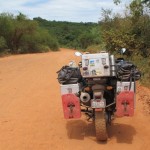
- We took the right stuff and had a pretty damn easy packing system. For those who accused me of taking too much, I say: YOU travel with your wife for three months! Parts and tools in the left pannier. Electronics and admin stuff in the right. Two Wolfman wet bags for our clothes and a top box as junk drawer. Packing and unpacking was pretty much hassle-free even though we had to do it at least once a day. KR bought a bunch of travel zip-up bags that we each used to organize our clothes and they made all the difference. On reflection, I would probably get a bigger top box: )
- My riding suit (Revitt) worked great.
- The Starcom intercom worked flawlessly the whole trip. I replaced two headsets and one connecting cord. I would bring more spare parts for this next time.
- The money strategy of ATM card, two credit cards, and a stash of cash is the only practical way of going.
- Electronics were a go! A computer for each of us meant that KR used her computer to do travel research. We started out with three cameras (a G12 for KR, a tiny Cannon for me, and a video camera for the bike). Makes for some significant battery, charger and connector requirements, but it was worth it.
- Footprint’s South American Handbook was excellent. Considering we only have one book for all of SA, it was terrific.
- We were prepared paperwork wise: copies of all necessary docs, fake wallets, fake registrations, etc., etc. We never needed to make a photocopy or get a passport photo.
- Finally, and definitely most importantly, we were connected to friends who helped us with all our problems along the way. I had a Technical Team (Ryan, Bruce, Ron), a Map Team (Sam and Dan) and the All Around Figure Anything Out Man – Sam Hershfield. Then there were the on-the-ground friends who helped locally: Jorge, Nacho, Fede, Jorge Hernandez, Edson too many more to mention.
The Bad
- KR says she would do more pre-planning than we did. Considering we did NONE, that wouldn’t be hard too do. When you’re moving every day, it’s difficult to keep up with new destinations coming up in terms of hotels, what to see/do, etc.
- Maps. We needed more and better. This goes 10X for the Garmin, which was actually useful when it had a map of the area. Putting old maps into the GPS in South America is just inviting trouble as it made the Garmin a questionable resource for most of the trip. Garmin’s MapSource software is one of the least intuitive applications that I’ve ever used, which shouldn’t be much of a surprise given their website and product user interfaces.
- Entering big cities (it’s relative again) at the end of a day is tough as we inevitably got to our hotel tired, stressed and cranky. Our best strategy was to stop on the outskirts, grab a coke/beer, and plan our entrance. When we did this, things turned out well.
- Getting out of big cities is as challenging as figuring out how to get in, maybe even more so given that we needed to find our way to a certain highway. Remember, no street signs, no highway numbers, dirt roads, etc. The only solution we found was to ask local sources for directions prior to lift-off.
- The Touratech panniers were both good and bad. They may be ugly, but the things are sturdy after four tip-overs. The locks and everything worked well enough. Yet their mounting system is designed in such a way that the panniers tend to get loose and as a result one pannier fell off entirely because the system failed. This forces a pannier check twice daily. Also, they’re nowhere close to being water proof and necessitated wrapping everything in double plastic bags.
- The concept of multilayered riding suits is hilarious. Both our suits had inner layers designed to break the wind and keep the rain out. Think about this for a moment, you’re riding along and you get hit by rain. Quick – pull over, take your pants and jacket off (and boots), zip in the rain liner, and put them back on again! All on the side of the road in the pouring rain? Impractical. We both tossed both inner layers (warmth and rain) and just layer our way to warmth/protection.
- Rain suits generally don’t keep out the rain. My two-piece BMW rain suit let rain in all the pockets and the crotch. KR went through two suits (one by___ and the other by North Face) and still ended up wet at day’s end.
- Nolan helmets. Once again, great idea (flip up, built-in sun shade, comfortable) but poor execution. My helmet was NOISY, pieces kept falling apart, and the mechanisms stopped working when sand got in via the wind.
- I brought too much of the wrong clothes and not enough of the “right” stuff. I basically wore one pair of shorts or one pair of pants the entire trip. I had two shirts that I alternated. But then I had way too many back-up shirts, t-shirts, long-underwear, etc. We were close, but I’d rethink the specifics.
- South American food was generally horrible. Not in the sense of “be careful what you eat” (which you should) but in the taste and health sense. Granted KR and I aren’t the most adventuresome people so it’s partly our fault we didn’t like the food. But most of the food is from poor ingredients, with heavy use of fats, and either fried or grill-fried. Now, before all our friends and hosts in South America email me with threats, there were lots of exceptions to the above generalization. But the majority of the hundreds of meals we had were less than memorable.
The Ugly
- The Spot Satellite locater is a piece of shit that never worked. Their support folks don’t understand that you might be calling in from a far-away place (“Mr. Walti, we’ll mail your warranty papers to you). If life wasn’t too short, I would hassle this company no end.
- BMW Service’s reliance on their computer diagnostic system. While I understand its purpose and reason for being, ALL the BMW mechanics I encountered in South America relied exclusively on it to diagnose the problem. If the computer said “no problem,” then there was no problem. Even if you’d just been towed 100 miles because of overheating.
- BMW’s lack of a global, by-model knowledge base of technical issues that could be shared by BMW mechanics. This is simply mind-blowing that ALL of BMW’s technical experience is held only in its local mechanic’s heads. If you’re local mechanic happens to have experience with the same problem you’re having, you’re in luck. If not, you’re out of luck. Trying to get access to some of the technical brains within BMW corporate proved to be a joke. And yes, I know there are a bunch of rider forums who do an excellent job of trading technical information, but try and search that info and get your local mechanic to act on it when his computer is saying “no problem” is just as much of a joke. BMW should be ashamed.
- I got educated on how to ship a motorcycle the hard way. I paid just about $4K all-in to ship my bike to BA and just under $1100 to ship it back. What changed? Just about everything, but the biggest difference was Federico Testa (email: normaduran@logistic-solution.com.ar) handled everything going back and therefore I wasn’t double charged by multiple forwarding agents. We also used the roll-on, roll-off method which eliminates the need for crating (my crate cost $750 for the trip down). As for timing, I would never, ever ship a m/c by sea if I needed to get it somewhere by a specific date (i.e. the Dakar) unless I targeted an arrival date a FULL MONTH ahead of time. Paying customs warehouse storage fees are a small price to pay to avoid the delays we experienced. Finally, I opted for as little bike-prep as possible, which eliminated the air freight option (taking the front wheel and cases off, draining all fuels, etc.) When NV finally arrived in BA and the crate was opened, all I had to do was stick the key in and start him up.
What’s Next?
Having not just fallen off the Turnip Truck, I haven’t broached the subject of our next trip to KR just yet. I’ll be curious as to whether our “motorcycle around the world, one continent at a time” strategy is still operable given the soreness of KR’s butt and back. I suspect she’ll try to modify it with a different vehicle or destination. In the meantime, KR is anxious to get to PV to reunite with the love of her life (Lilly) and to prepare Corona and Little Big Sur for any of you folks who can find the time and means to get to Puerto Vallarta. All are invited.
My immediate tasks include finding a more permanent place to stay in Los Angeles and getting back on the horse to help Neal at TPG. There are some pretty exciting opportunities popping up and I have a feeling that TPG is about to reach a whole new level.
No matter where, when and how, I intend to chart our own course in life from now on. I feel that we’re mid-stride in our Rewire Project to reconfigure our life for more control and fun, less restrictions and responsibilities. I will let you know how the next step goes.
A Lesson from the Enterprise bus driver
Last night the driver of the Enterprise Rental Car bus reinforced a message that we all know is true, but few of us really act on. After chatting for a few minutes on the way to the lot, he said in response to our trip summary: “You gotta enjoy your life! We only got one!” He said it with such conviction and enthusiasm that I thought he’d just come back from a 90 day m/c trip. We then launched into a discussion of our favorite South American foods (few) and he responded by giving us a detailed blow-by-blow descriptions of his favorite Honduran dishes. By the time we got to the Enterprise lot, all three of us were hungry! I got off the bus and thought to myself, life is what each of us make it, whether we’re a bus driver or management consultant.
And so I resolved to enjoy whatever days we have left to the best of my ability. Whether working or playing, I’m going to try and enjoy it. I wish all of you the same.
Fred

Quick, if a town has an impressive gate, what country are we in? Mail in your answers for a big prize
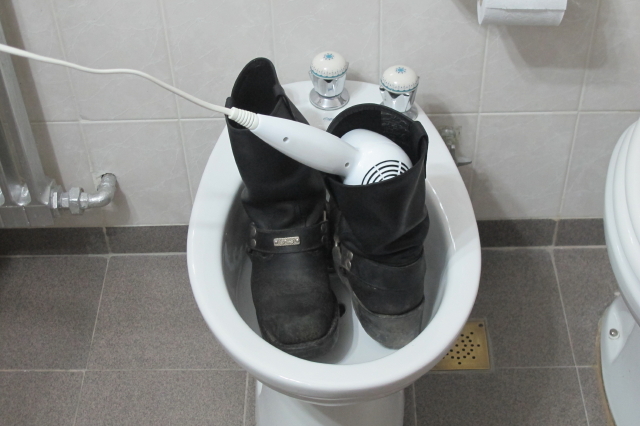
Technical innovations are the key to survival on the road. I bitched that KR bought a hair drier, but it was both a boot-drier and the primary therapy for my six weeks of hip problems.
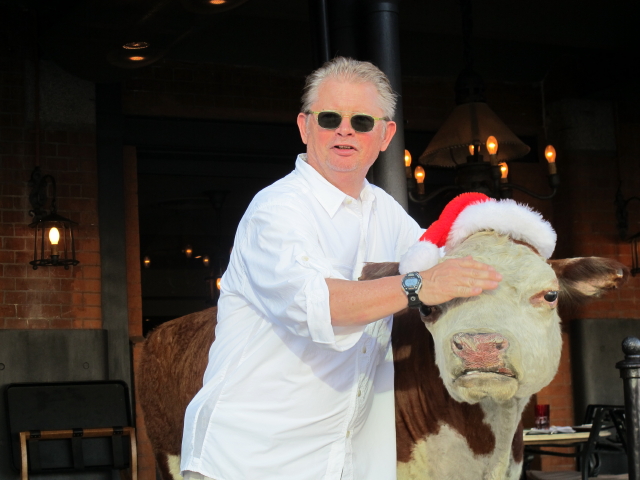
Beef baby, and lots of it! If you want a great steak, Buenos Aires is your town. Cows seems somewhat less than enthusiastic about participating, though.
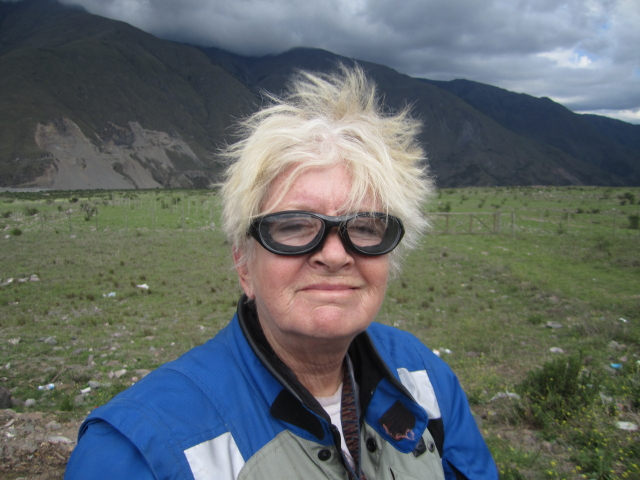
How could you not love this woman? KR stuck it out for 9000 miles and countless “encounters.” Good looking glasses were a special present from me.
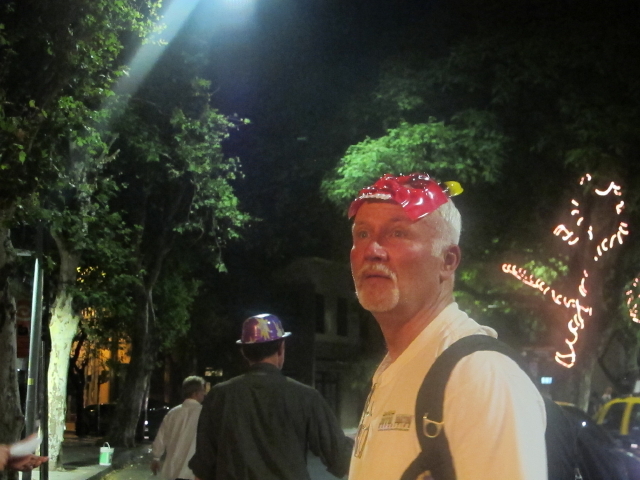
Devilish things seem to follow us no matter where we went. Here Jim Hyde goes with the flow in an all-out New Years street party in Palermo. We celebrated Carnival in both La Paz and Cochabamba on successive weekends. Then as soon as we cross the border into Brazil, we meet up with a bunch of guys celebrating their fishing accomplishments one night around the pool.
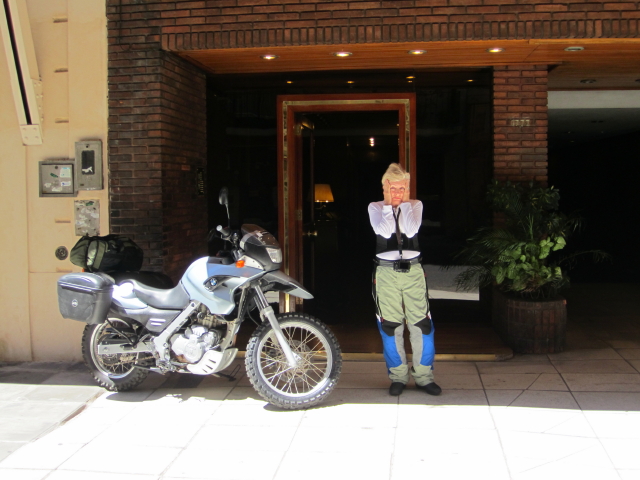
The Rented Iron Duke and KR outside our Buenos Aires apartment on the first day we get on a motorcycle. KR must be psychic as she’s getting visions of what’s ahead. We end up riding the RID for 1900 miles while we await Now Voyager’s arrival.
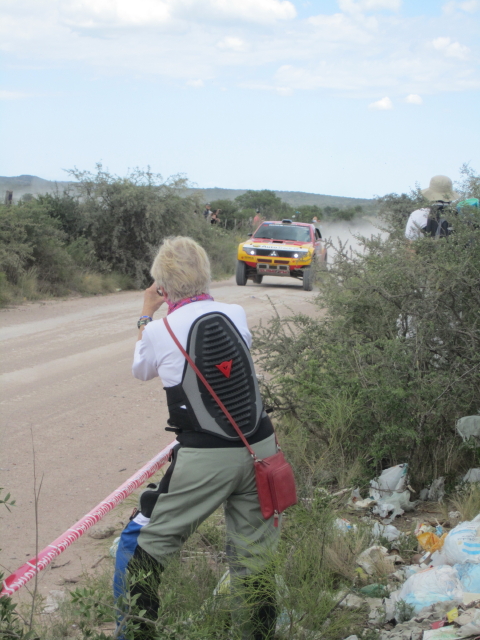
Even the second time around, seeing the Dakar was breathtaking. I was thrilled that KR got to experience a couple of days of the race. She wasn’t shy in getting close to the action to get her shot. She didn’t believe me about the crowds until we were greeted by tens of thousands of people on our way to Purmamarca.
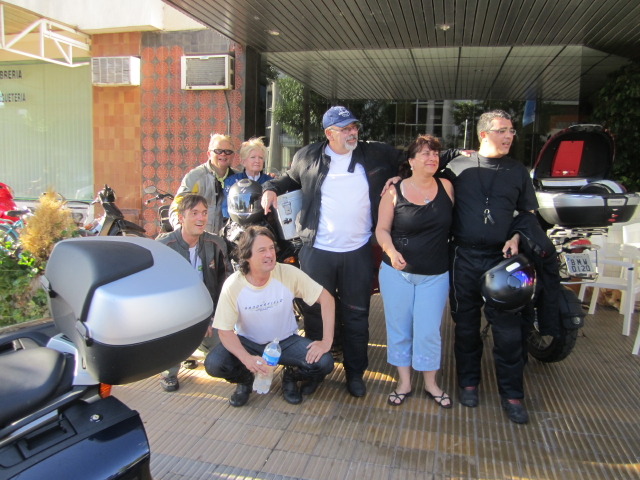
We met lots of nice people on this trip, none nicer than a group of Brazilians on a motorcycle vacation to Argentina and Chile. We tried to keep up, but NV wasn’t up to the task (yet).

Argentina gas station: Wi Fi, a cold drink and a/c to get away from the 106 temperatures. I miss them already.
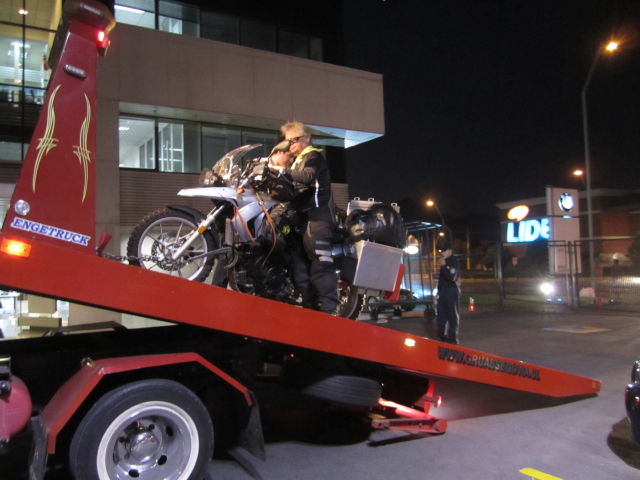
NV’s overheating problems were a bummer in so many ways, but also a learning experience. I know more about cooling systems than I ever wanted. I feel much more confident in out-of-the-box road repairs having seen some pretty amazing fixes applied. And, of course, who’s to say how often flatbed truck loading can come in handy.

Santiago was two-faced for us. One face was the fear, hassle and anxiety that goes with trying to figure out how to fix NV. Once we did that, we hit the reset button and spent a week exploring several alternative Santiago neighborhoods.
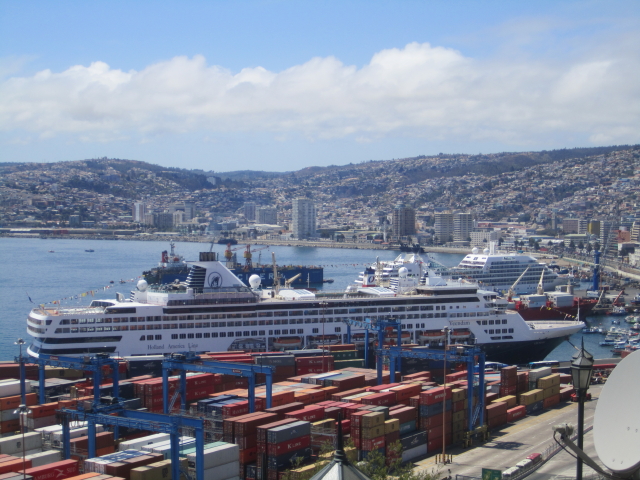
Valparaiso was drop-dead gorgeous during our couple of days there, though we never found our (its) groove. Physically, it was the most beautiful city we visited, yet we were never comfortable there as everyone we met warned us to be careful of getting robbed. Caution is a good thing, in moderation, and this place seemed to be too on edge.

Our spirits were on the upswing by the time we got to Lago Verde on the San Francisco Pass over the Andes. We spent an entire day exploring the Andes in a 4X4 and it was a wonderful experience. Lago Verde needs to be put on everyone’s South American list.
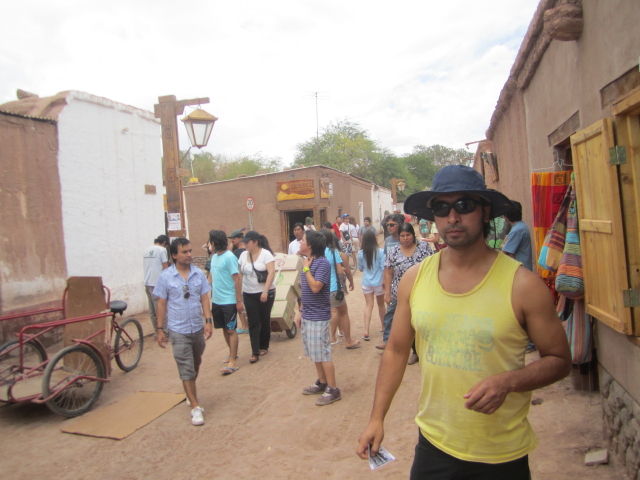
Hey dude, nice hat. San Pedro de Atacama was like living in a time warp from the 60s. I felt right at home among the Reggae and dreadlocks. I could have warn a tank top too, but I didn’t want to intimidate anyone…
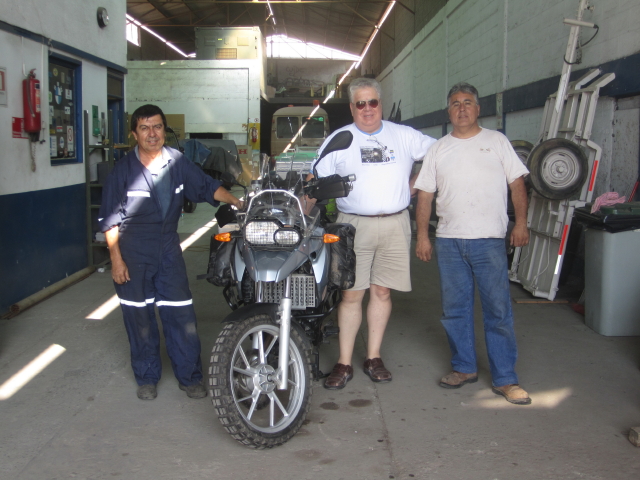
Rescue crew. Beto, Jorge, and Ruben and fix NV “The Chile Way.” It was indeed, forever. Thanks guys.
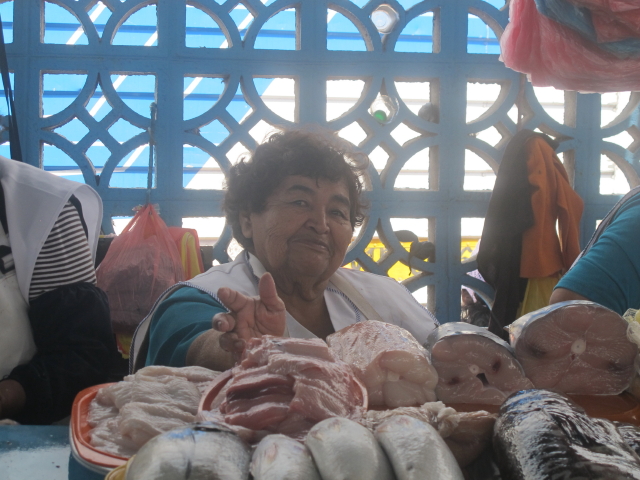
How can you not love the people of Peru? This lady was proud of her daily fish offerings, taken off the boat just behind that wall. Fresh, you want fresh?

We were repeatedly warned about protests and work stoppages in Peru and Bolivia. Didn’t see any of that, but we did see a lot of street marches supporting candidates or complaining about some issue. Seemed to me that the people of Peru and Bolivia were really into their newly functional democracies. We all could learn something from this type of street level involvement in government.
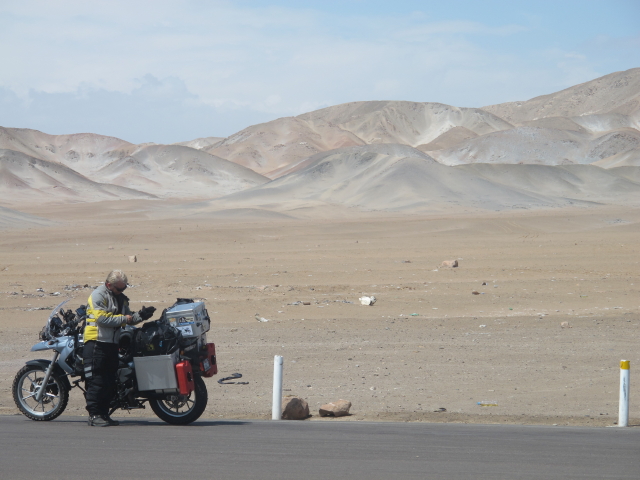
The Atacama. We spent weeks riding through this ever-present, but constantly changing desert in Argentina, Chile and Peru. During much of this time we were unsure of NV’s ability to withstand the heat, thus focusing my mind on “what if” rescue scenarios.
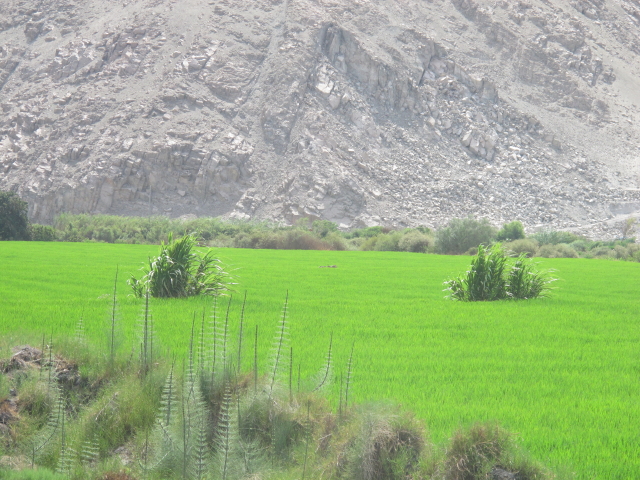
Yet we came across valleys like this one in the middle of the Atacama. Fed by a river carrying snow runoff, these valleys were a lush green that’s hard to capture unless you’re there.
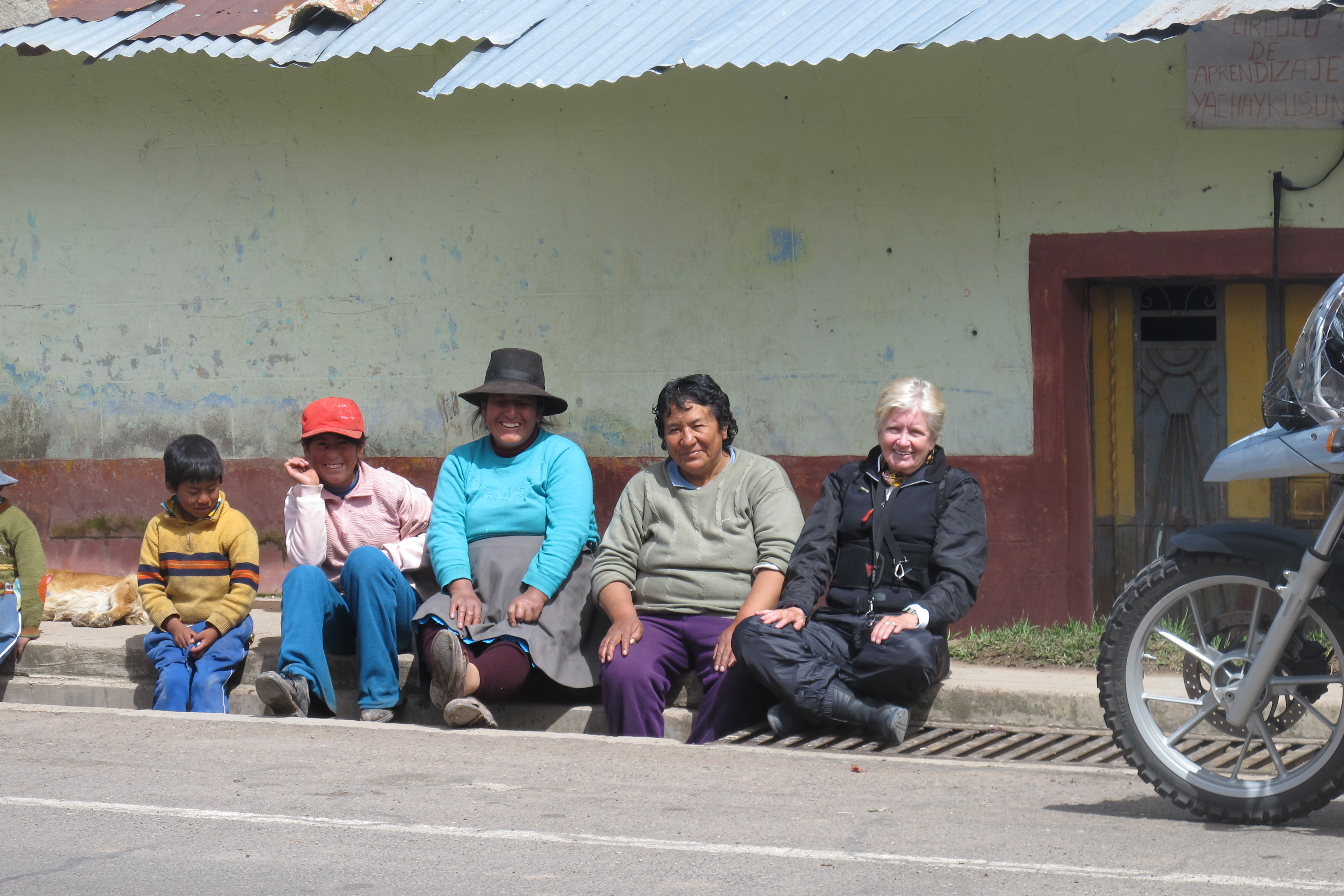
On our way to Cusco in the Andes, Karen finds some new firends. It’s hard not to have a good time among the people of Peru. Always quick to smile at two crazy motorclyists.

Dinner anyone? Guinea pigs are fattened in the kitchen of a restaurant high up in the Peruvian Andes. KR and I could not bring ourselves to sample the delicacy…
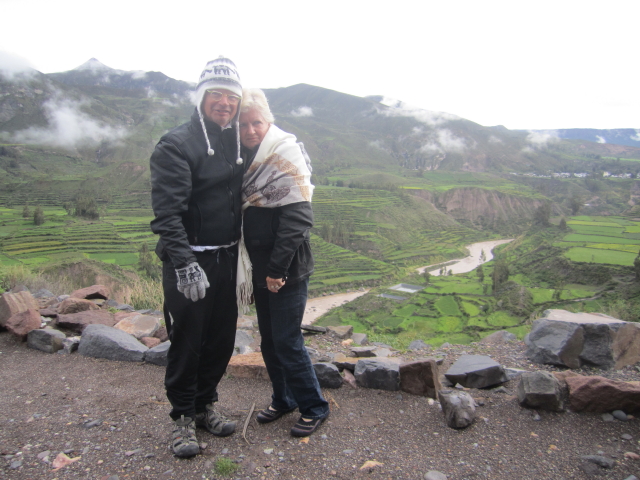
We spent two days exploring the Colca Valley in the Peruvian Andes just east of Arequipa. Valley is 70+ miles long and famous for its terraced fields that are a thousand years old. It was a great place to see, but two days in a bus is about 1 3/4 too many.
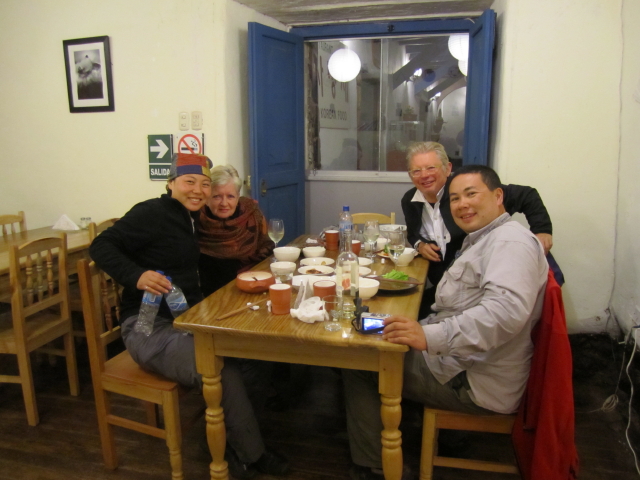
Real Men (and Women). We met a number of fellow bike adventurers along the way. None were more adventurous than Q & Shu who were on a nine month journey from the Middle East, through Europe, South America, Central America and North America. We met them in Cusco and had a great dinner and shared lots of tips. Their bike, a BMW F800GS, had just suffured a broken yoke and they were about to put it on a truck for the two day trip to the BMW dealer in Lima. They made it and continued north. Last we heard, they were thinking about extending their trip…
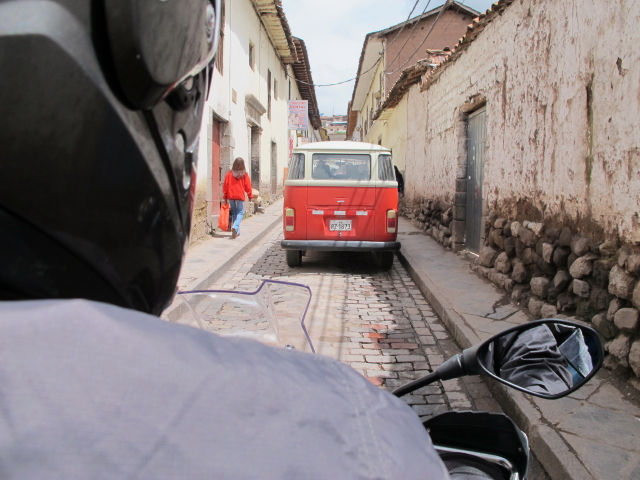
Why? Time and time again a complete stranger stepped in to save our bacon. This is the local Cusco family’s VW bus that we followed to find our way out of Cusco. Sounds easy, does it? You try and find a particular road in a town of no stop signs and numerous road closures. Anyway, we were helped by the kindness of complete strangers in La Paz, Santa Cruz, a small town in Bolivia (whose name I forget) which is notorius for its bad traffic, Santiago, and Mendoza. See, there are advantages to appearing to be clueless.

There is simply nothing like it. Machu Picchu was BY FAR our most stunning excperience. Even in rain. With lots of other people around. It was worth the 20 year wait. GO!
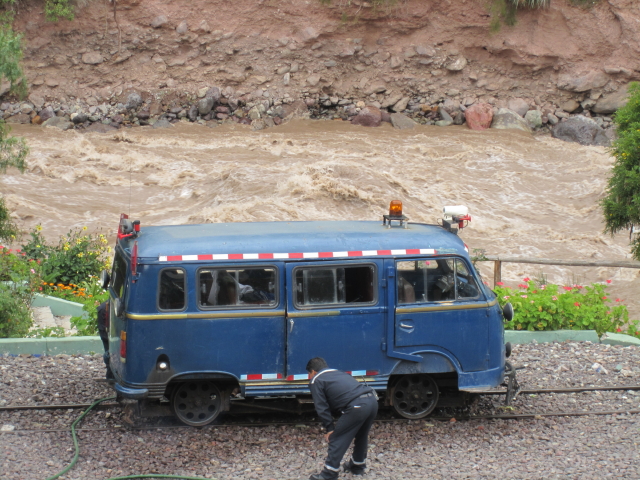
Recycling. I was often surprised at how inventive South American’s are in meeting their transportation needs. We American’s are totally spoiled in this manner. This is a VW Bus reconfigured as a train repair/parts carrier.
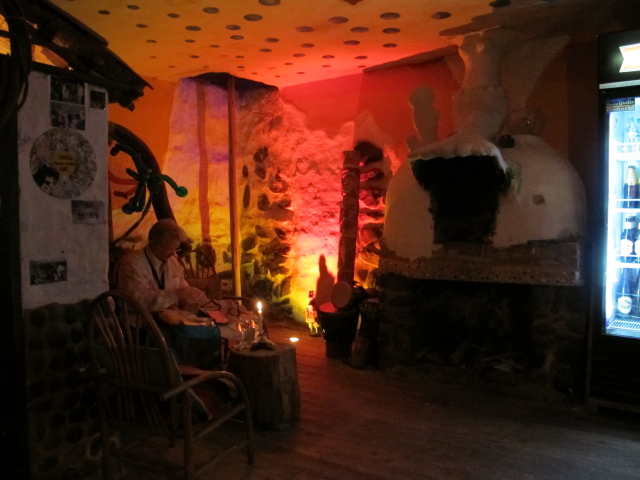
This will not make CNN’s headlines: we went into more than our fair share of bars and restaurants that might be classified as “Iffy”. This was probably the most bizarre and coolest one. Located in Ollantaytambo, Peru, it was housed in a thousand year old Inca structure featuring Bob Marley motif and a pole for quick escape from the second floor. Oh, and how could I forget the fireplace coming out of the Mermaid’s womb?
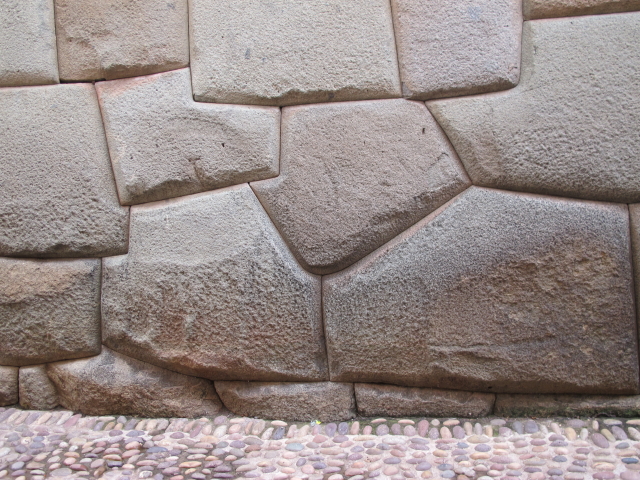
The Incas were unbelievable craftsman, especially when it comes to their stone work. It’s no wonder that the Spaniards built their houses/churches/palaces on foundations created by the Incas whenever possible. Here’s what’s most amazing to me: their buildings were architectural, engineering and craftsmanship marvels that even today make us wonder, “How did they do that?” Yet, they had no written language and left behind a legacy of mystery and guesses about who they were and what they did. Strange.
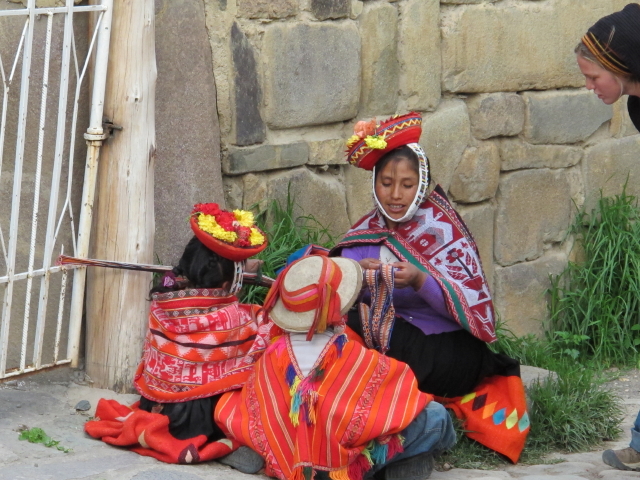
One of the reasons we liked Peru so much was that many of their people dressed in traditional “costumes.” It was nice being in a country in which of its citizens still valued a way of life their ancestors enjoyed. Bolivia was very similar. Not so Argentina, Chile and Brazil.
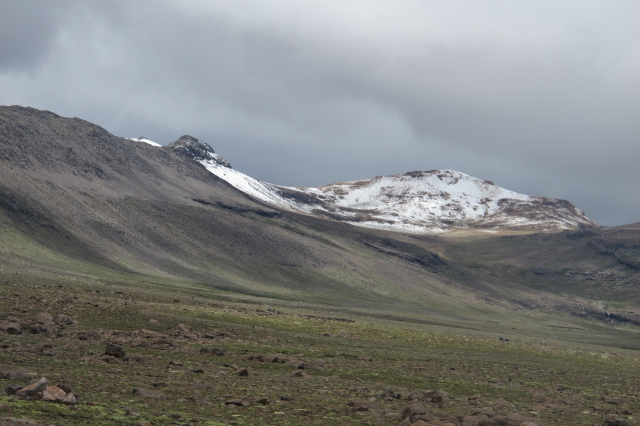
We spent almost a month in the Altiplano at elevations of 10,000 feet and above. It was beautiful, especially in Peru, as much of the Andes were in a Sound of Music green. It was difficult to adjust to the altitude despite having all the drugs and a lot of time to do so. We never got sick nor really encountered bad headaches. Rather, we had trouble sleeping, physically doing things, and most importantly — it was COLD, especially on the bike when it rained. For a two weeks stretch KR and I never felt warm. We finally wimped out and beat a retreat to the tropics of Bolivia and Brazil.
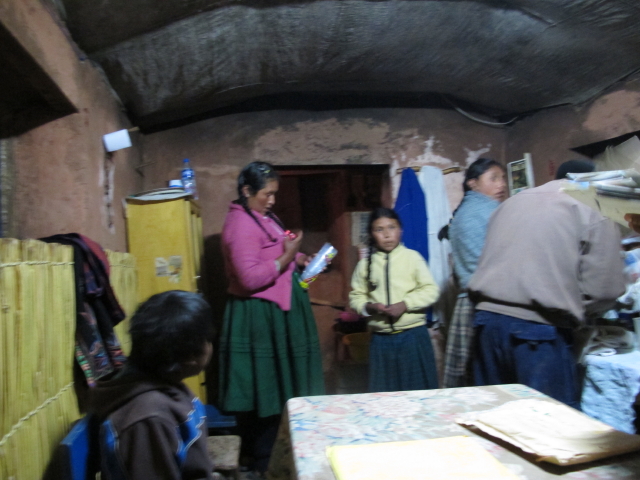
The evening we spent with a family on an island in Lake Titicaca was by far our most memorable personal encounter with Peruvians. Our family seemed pretty damn happy to us despite not having what most American’s would describe as basics.
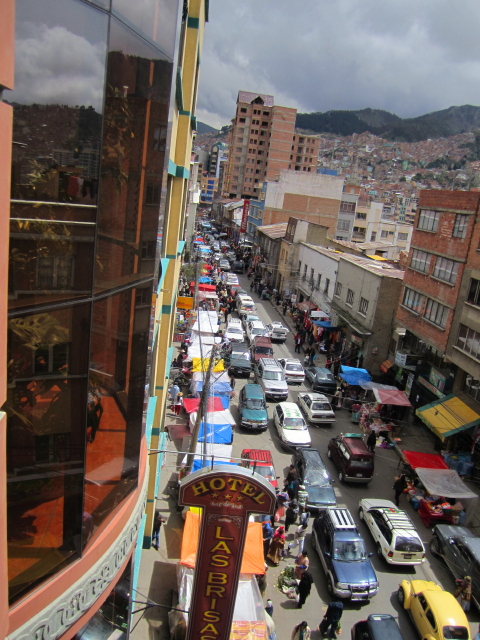
Unknowlinglhy, we rode right into the middle of Carnival celebrations in La Paz on one Saturday night. What’s more, we somehow found ourselves in THE neighborhood celebrating the hardest. I think Karen an I will always wonder how we survived that night without a crash. Next morning we awoke to this as the party just continued…
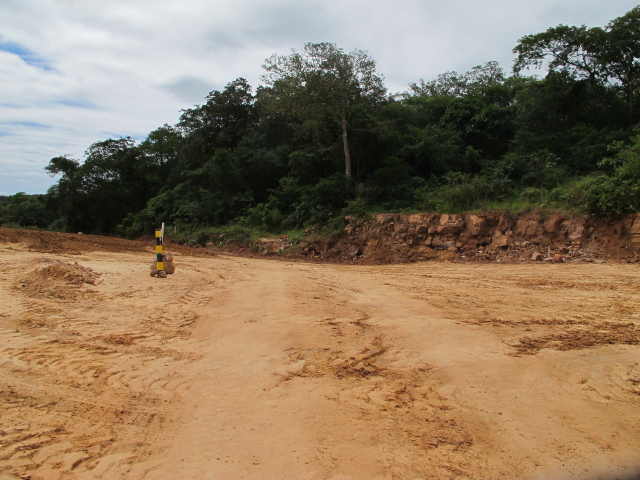
We encountered remarkably few dirt roads, but the ones we did were challenging for two-up riding. This stretch of dirt road lasted two hours and occurred in the middle of the Bolivian tropics.
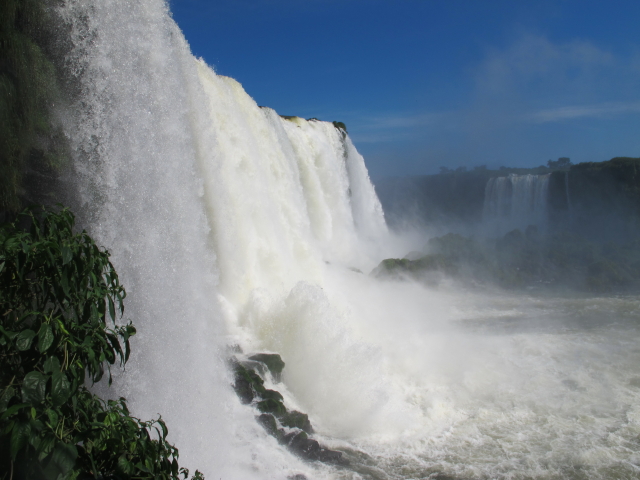
The Iguacu Falls were scary powerful when viewed up close. The day after we visited two Americans were killed when their tourist boat capcized upon hitting some rocks.
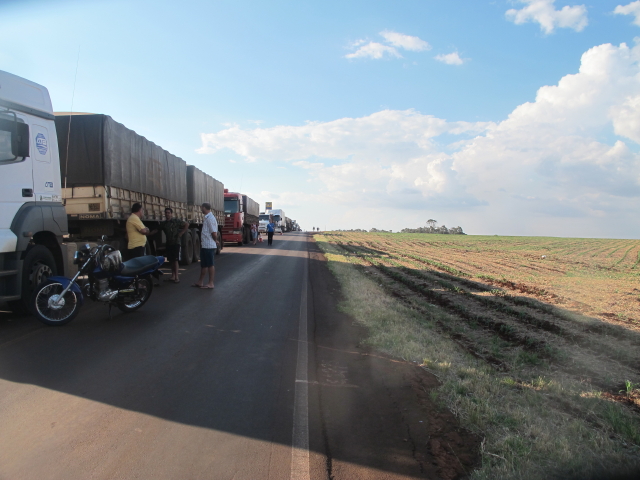
There are some real advantages to riding a motorcycle versus a car. Motos were always allowed through toll stations for free. We were always ushered to the front of a border/inspection station line. And, in the case of long lines caused by a huge truck accident (above), we rode past miles and miles of waiting cars and trucks to the point of the accident. We quickly figrued a way around and were on our way while the rest of the four+ wheelers sat and waited in ignorance.
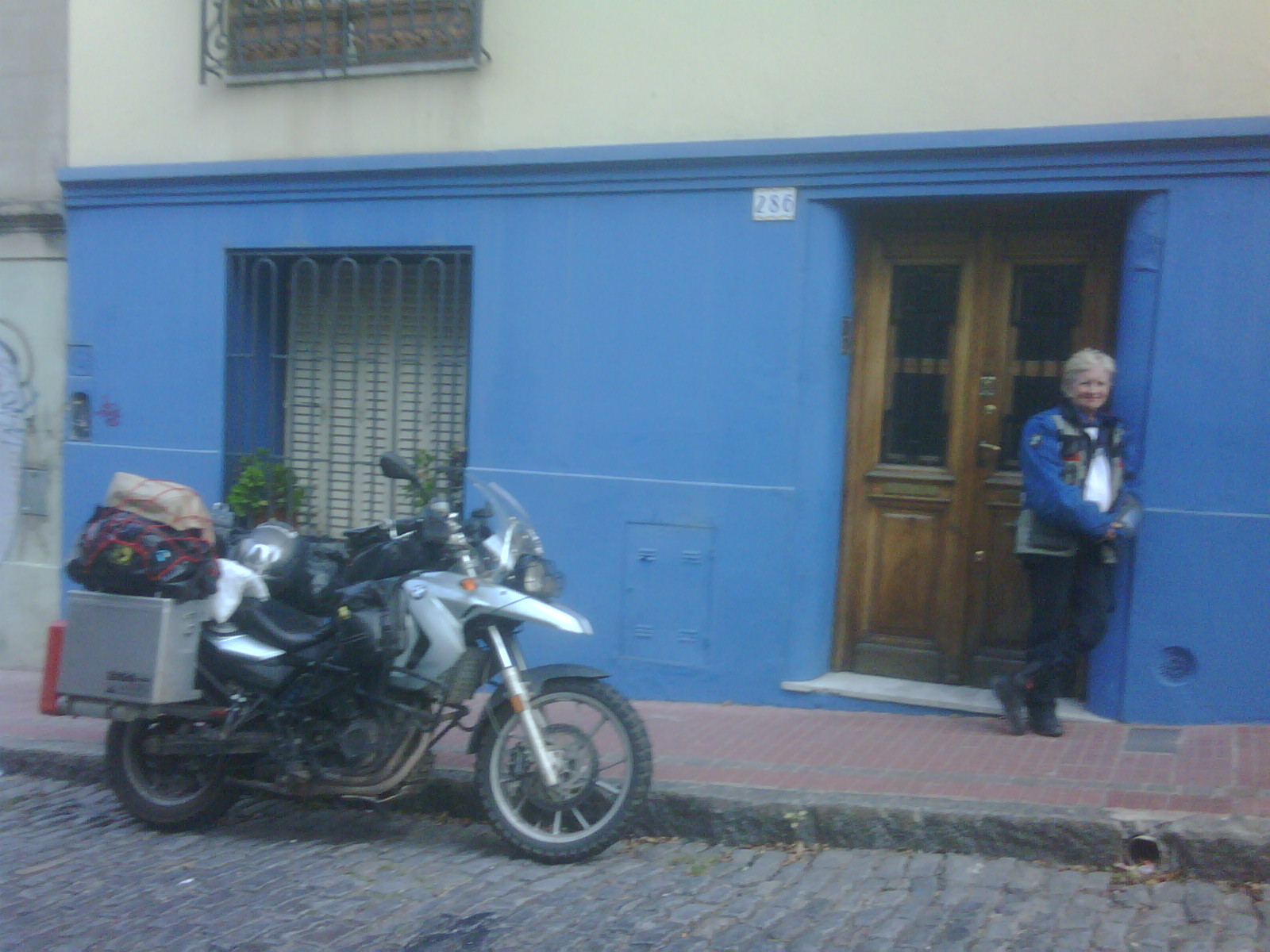
Blue on blue. 9000 miles later and we’re back in Buenos Aires at La Casita de San Telmo. Two days later we’re on the plane home.
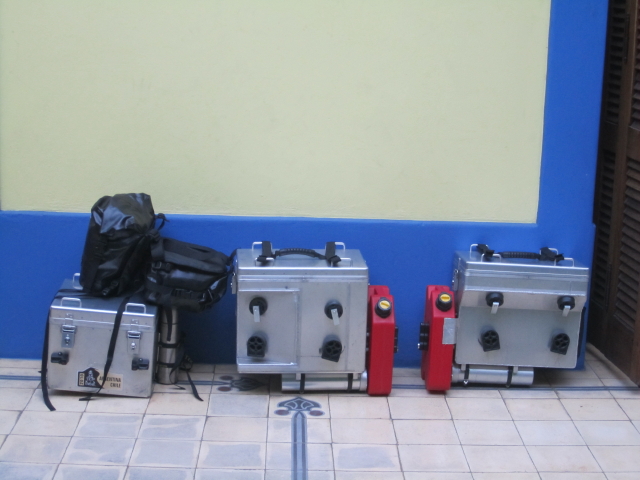
They’re not shiny new anymore, nor might I add are we. But we’ll all be ready to go when the gun fires at the next start line.

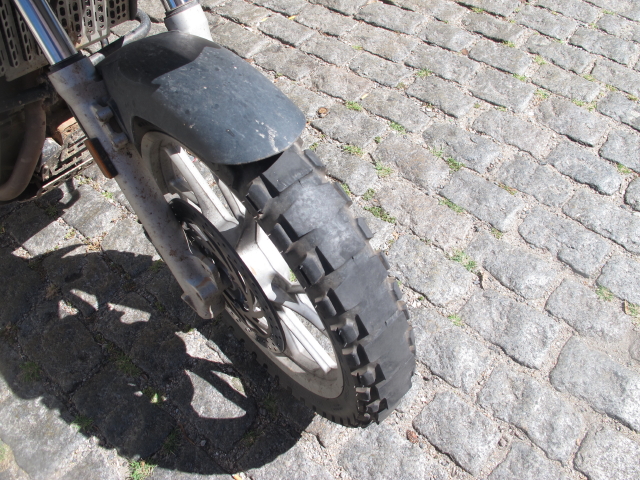
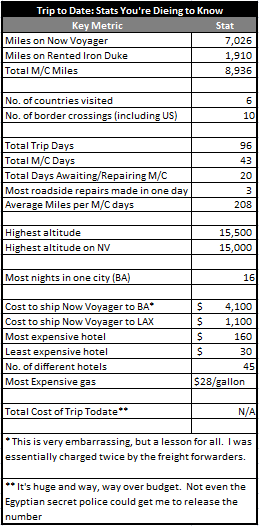
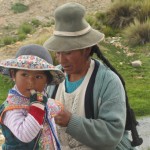
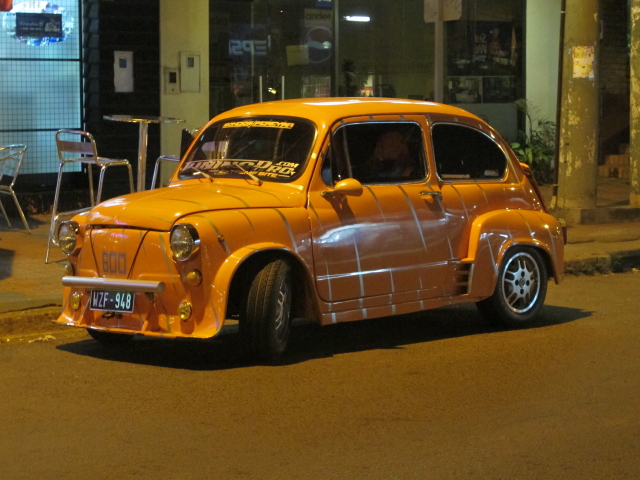
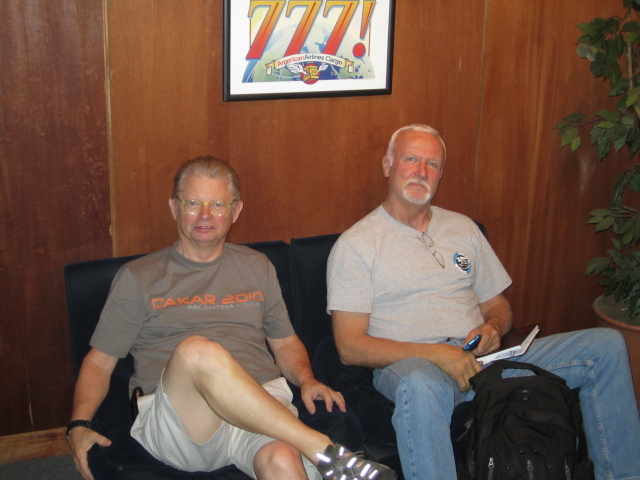
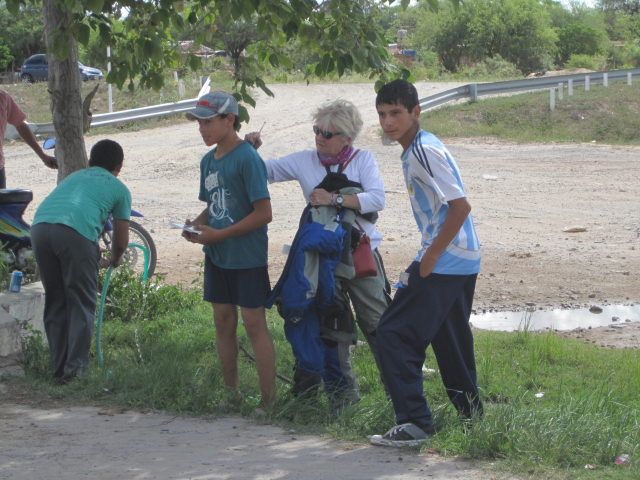

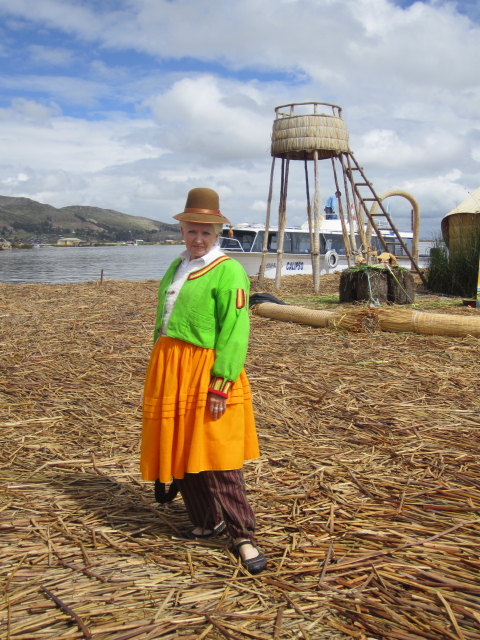

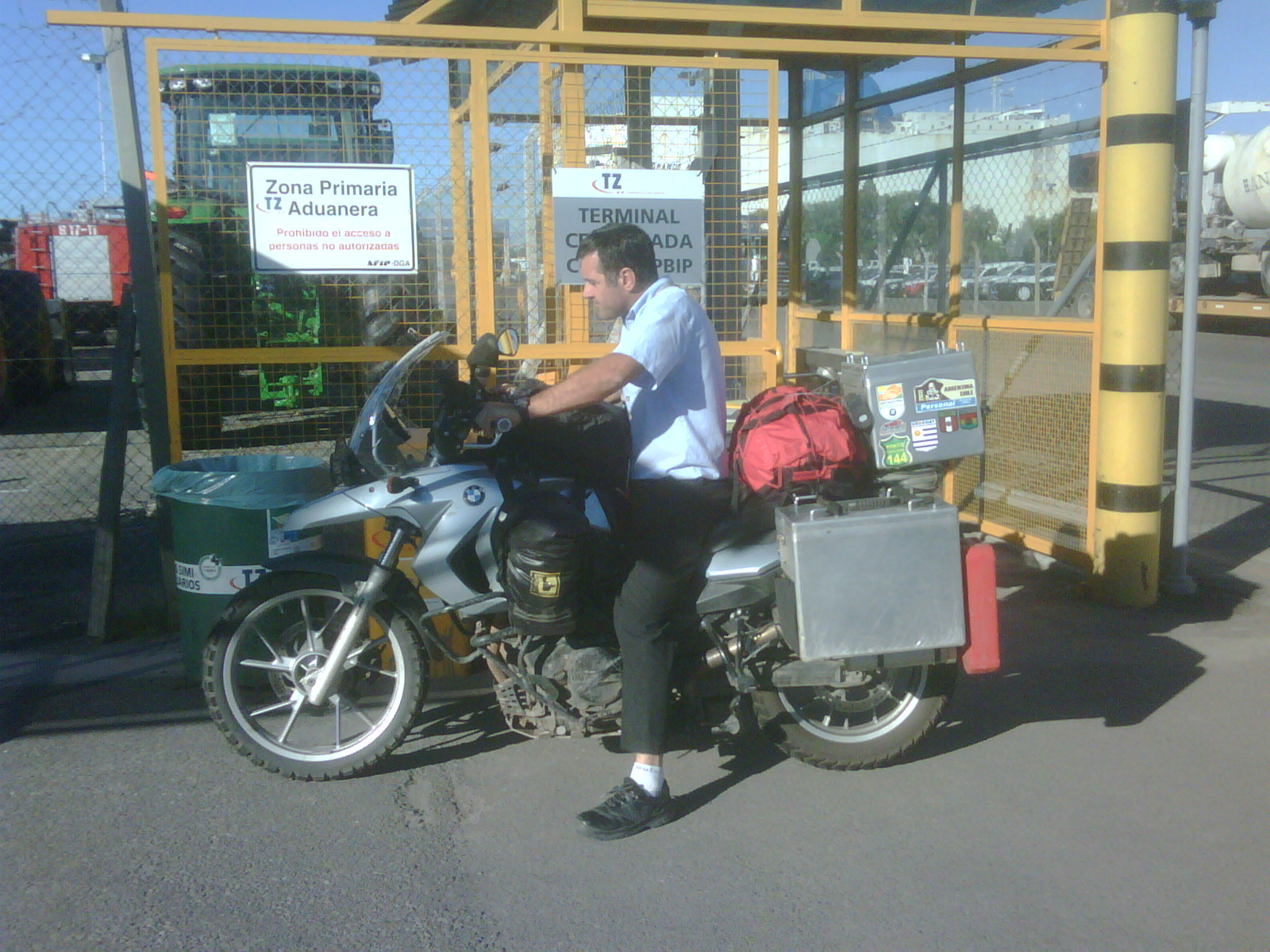
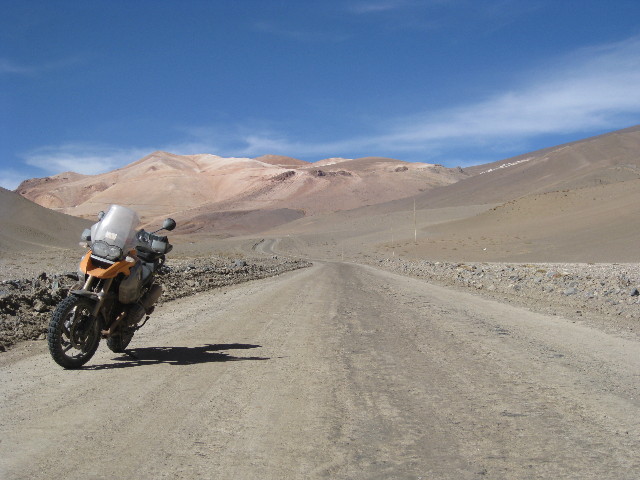
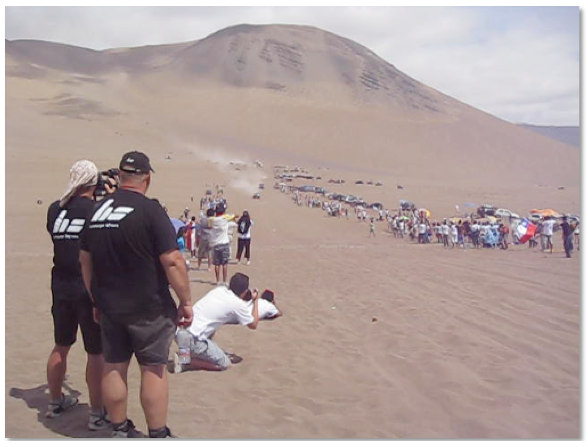
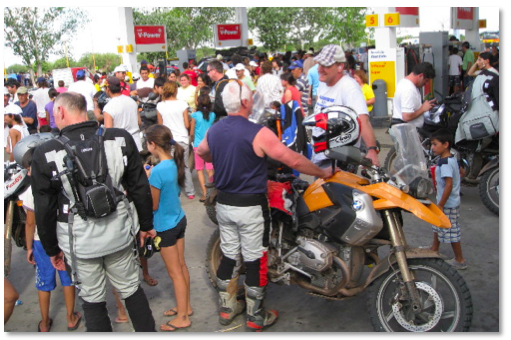
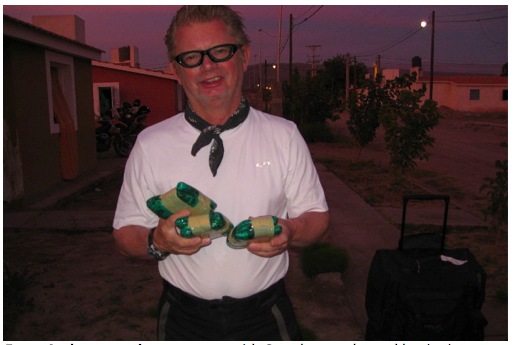
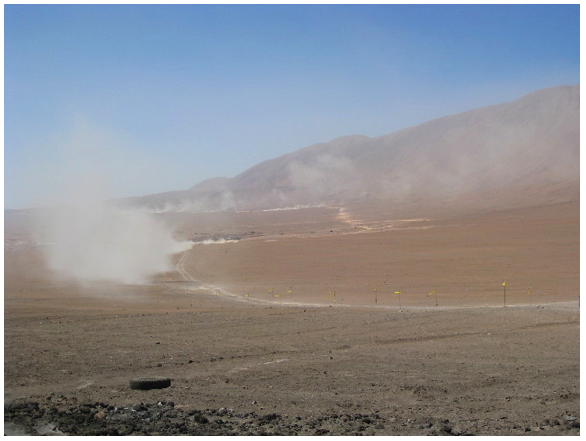
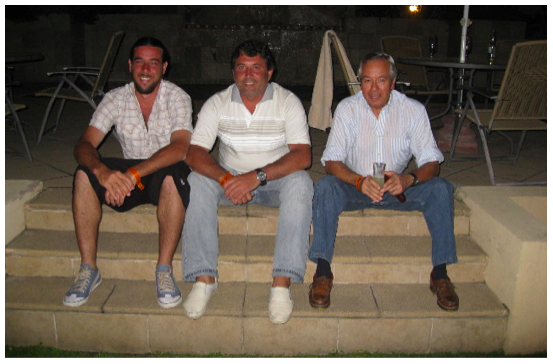
Fabulous trip and equally fabulous commentary!!!! Almost makes we want to go.
When are you back in PV? We are going there week of the 10th.
Glad you both made it back in one piece.
Steve
Fred and Karen…that was a great trip, and amazingly documented. The big thing I got out of all of this was that despite years in the planning, you need to go with the flow and handle each situation as it happens, which you two did with aplomb. And, of course, the journey is all about the people you meet. Kudos to you, and I hope your next adventure begins soon. Keep the reports coming, your writing and pictures are outstanding!
john in Denver
FW & KR, welcome “home”. What a wonderful adventure (now that it’s over). Every day was exciting, frightening and a surpise. We were so lucky to be able to “ride along with you” for 9000 miles and share your experience through wi-fi, Skype and Google Earth. It was like being there…without the rain, dirt, wind, cold, heat, bad food, near-death experiences, spectacular scenery, inability to communicate in six different languages/dialects, warm locals, malfunctioning BMW, ass sores, Montezuma’s Revenge and constant fear that you two lived with for over 3 months. Our only, and we mean only criticism of your reportage is you didn’t give KR the credit she so lovingly deserves for her award-winning pictures, day to day and minute to minute trip planning and putting up with your certifiable single-focus insanity. Love and Kisses Sam &Jill
f and k, WELL DONE! i have to say i was dubious when we met, but i am now choking down my own dubious nature. look forward to seeing you at the CA HU meet this fall.
love the dirt front / street rear tire idea; BRILLIANT solution.
big CONGRATULATORY hug!
z
Steve-
Glad to hear from you. What are your plans for PV? KR is going back to PV early next week. I’m not sure when I’m getting down there as I have to check things out at work first. Minimally, call Karen (323.854.2539) or email (karen@laicorp.com) and you guys can get together for dinner. I’m sure she’ll have some ideas on what to see/do. fred
WOW! I’ve probably said that before. I heartily agree with with everyone above. You two did a great job and I’m so happy to know you are home safe.
We are planning to tour England et al this September and Marilyn said why don’t we do on a bike. See what you have done!
Hi Guys,
Welcome back. Great trip.I’m still a couple of episodes behind. We just finished the 3-day Overland Expo 2011. Lots of motorcycle travelers!! You should go next year. It will inspire you. Hope to see you in PV before we leave on our Trans-Eurasian Odyssey.
Gary
That was a great report! I really enjoyed reading your experiences and lessons. I’m currently in Brazil and would love to ride my bike back to the states when I’m done here. Do you know if the roll on roll off procedure, which is so much less expensive, is available from the US to BA or Brazil?
Curt-
Glad you enjoyed the report.
I think the roll on/roll off approach is available in any port that imports/exports cars, which has to be most. Here is the contact information for the shipping agent I used in BA. He could probably help you either to/from BA or Brazil: Federico Testa [federicotesta@logistic-solution.com.ar]
Let me know if there’s any other way I can help.
fred
Fred & Karen… not since I read Kon Tiki when I was 10 years old have I encountered a “document” crammed with so much adventure, insight, wit, courage and humanity. Thank you for providing this record of your experiences for us all. These days, i don’t think I could ride a bike as far as the Mid Town Tunnel (and I live on 22nd Street), but the Restless Traveler lets me ride along with you in fantasy.
Also, thanks for noticing Ogilvy Taiwan’s effort for Ta Chung Bank. It’s a great salute to MC adventures, even if it’s in Chinese.
I only have one question: would a Honda have been a better choice than a BMW? You did all the research and shopping – and I know you have nothing against Honda’s. Just curious.
Meanwhile, I hope you can adjust to the workaday world while KR heads south to the wonders and beauty of PV. (When I first read those two letters, for an instant I thought “Palos Verdes?” But for you? No way, I’m just stuck in average.)
Whatever comes next, please keep posting. Us not restless enough armchair travelers need you!
steve
Steve- Thanks for the very kind words. They mean a lot.
As to the m/c choice, I’m not sure Honda makes a m/c (distributed in the US) that would fit me and the mission. The Transalp or African Twin are the only two models that might be good, assuming I could reach the pedals, which is a big assumption:) and they’re not available here.
My goal, believe it or not, was to get something as light/small as possible that we could maybe take off road as well. Given everything we took, I’m not sure we accomplished the light part of it. At least with Now Voyager, I could reach the ground with both feet.
The really great thing that BMW has over almost every other brand is a deep and broad list of accessory makers. You can find anything you can imagine to hang on it. And in typical fashion, I did hang just about anything available on it.
Now Voyager’s unreliability relative to the cooling system is inexcusable and BMW should be ashamed. They aren’t because they’re not aware that they have a problem since there is no worldwide technical database of problems.
Take care
fred
Interesting pics, the railcar wasn’t a VW bus though. It’s similar yes, but definitely not vw.